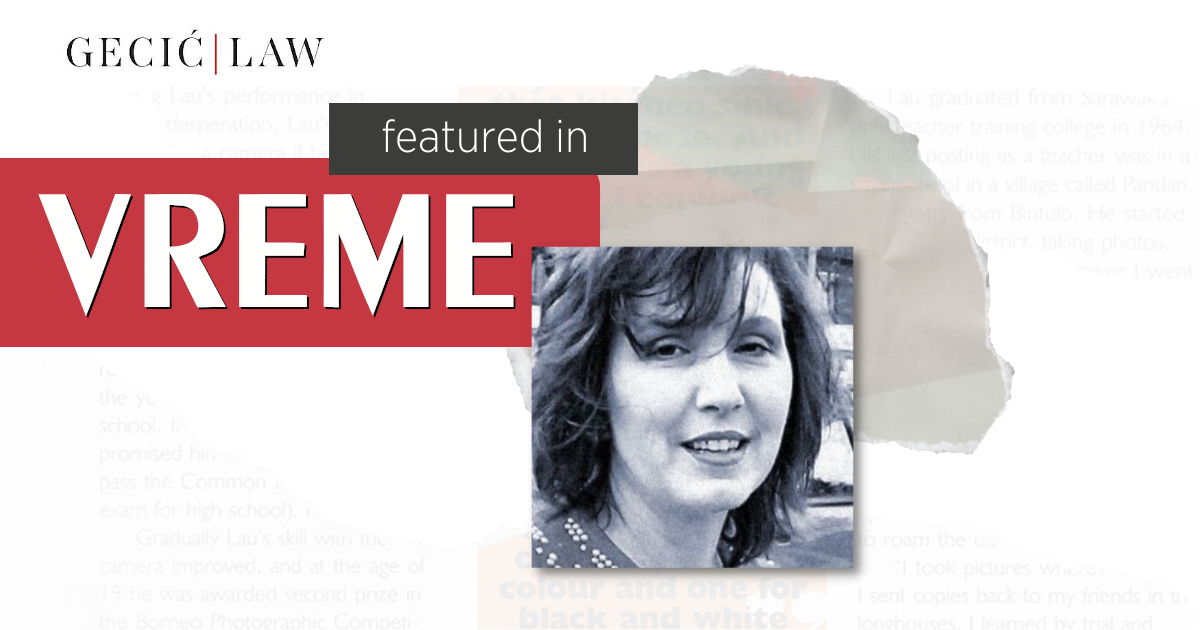

We bring you below in its entirety the op-ed authored by Elizabeth Chung, Executive Director at the International Academic Center EducationUSA Serbia, published in the weekly Vreme of September 29, 2022.
Many will be amazed when they learn that Serbia is a leader in participating in the great intellectual exchange of youth within the framework of higher education. Today’s potential international student has much easier access to a global educational experience.
From September 18th until September 21st the EducationUSA Europe and Eurasian Triennial Conference was held here in Belgrade attracting more than 50 U.S. higher education institutions and organizations, as well EducationUSA advising professionals from Europe and Eurasia, officials from the U.S. Department of State’s Bureau of Education and Cultural Affairs, and representatives from the Institute for International Education. There was a slight overlap with an IT conference that was wrapping up, and in retrospect, I find myself marveling a bit at which of these events was really the most futuristic. While the wonders of technology quickly deliver convenience to our fingertips and act upon our voice commands – and certainly made this U.S. higher education conference possible, I cannot help but think about today’s youth and the wondrous possibilities of international education that have never been so accessible to so many.
Many might be surprised to realize that Serbia has been a leader in partaking in the great youthful intellectual exchange of higher education. Whereas many world renowned Serbian scientists are famous for partaking in U.S. higher education, it is not as well known that in fallof 1919 a group of 61 young men and women also arrived in the United States to attend 53 colleges and universities. Let me clarify that not all of these students were obscure; I would hate to have the archivists at Vinca who care for Petar Martinovic’s papers come after me! The others also returned to do things great and small, making their contributions to society. In fact, many returned to form a small army of dentists who traveled the country alleviating much pain and suffering. Their work, their experiences, and even their letters are part of an important public collection in the National Archives and Records Administration.
Today’s prospective international student has much easier access to this global experience, and with the prospects of remote work, the return to one’s home country is also quite easy.
In fact, at this conference many of Serbia’s best and brightest were on full display with Bogdan Gecić, founder of Gecić Law and Harvard LLM graduate, delivering the keynote address. In addition, Dr. Nebojsa Ikodinovic, Associate Professor and also Vice-Dean of Student Affairs at the University of Belgrade Faculty of Mathematics, one of many faculties in Serbia that also receives international students from all over the world, delivered a morning plenary. The next day’s plenary was delivered by Dr. Mihail Arandarenko of the University of Belgrade’s Faculty of Economics. Dr. Arandarenko is also no stranger to international education having taught at the City University of New York and the London School of Economics.
Since no EducationUSA Triennial Forum would be complete without the country fair, the European and Eurasian advisors set up their tables to be visited by the U.S. representatives, and as host country the Serbian table was most outstanding due to the work of Dr. Adam Sofronijevic in cooperation with Adligat which provided many historical treasures for visitors to view. (insert website). As a fitting end to this entire event, guests enjoyed an evening at Kalemegdan and were treated to a most vigorous and athletic evening of performances by the folk dancing group, Talija.
While the United States has long been a coveted location for young citizens of Serbia seeking international education, Serbia has also benefited from this exchange. In fact, the Serbian universities provide students with a rich mix of professors who have been educated in Serbia as well as those who have experience in education or teaching abroad. Furthermore, the U.S. school representatives at the conferences were highly impressed with the level of knowledge, ambition, and talent displayed by the 300 fair visitors who stopped in to explore international education possibilities.
Today the entire world is at a crossroads having endured its first pandemic of modern times and facing many challenges such as climate change. Serbia is certainly no stranger to being at a crossroads or shall we say at a confluence that even expresses itself geographically. I see no reason why Serbia’s youth and educational institutions should not continue to benefit from international education exchanges that flow both ways.
To read the original article on Vreme, please follow this link.